Abstract
Although prostaglandins E2 and F2α have been suggested as mediators of the pulmonary hypertension seen after endotoxin infusion or during alveolar hypoxia, their precursors, the endoperoxides (prostaglandins G2 and H2) are much more potent vasoconstrictors in vitro. In this study we compared the effects of prostaglandin (PG)H2, a stable 9-methylene ether analogue of PGH2 (PGH2-A), PGE2, and PGF2α on pulmonary hemodynamics in awake sheep. The animals were prepared to allow for measurement of (a) lung lymph flow; (b) plasma and lymph protein concentration; (c) systemic and pulmonary vascular pressures; and (d) cardiac output. We also determined the effect of prolonged PGH2-A infusions on lung fluid balance and vascular permeability by indicator dilution methods, and by assessing the response of lung lymph. Both PGH2 and PGH2-A caused a dose-related increase in pulmonary artery pressure: 0.25 μg/kg × min tripled pulmonary vascular resistance without substantially affecting systemic pressures. Both were 100 times more potent than PGE2 or PGF2α in this preparation. PGH2-A, as our analysis of lung lymph and indicator dilution measurements show, does not increase the permeability of exchanging vessels in the lung to fluid and protein. It does, however, augment lung fluid transport by increasing hydrostatic pressure in the pulmonary circulation. We conclude: (a) that PGH2 is likely to be an important mediator of pulmonary vasoconstriction; (b) its effects are probably not a result of its metabolites PGE2 or PGF2α.
Full text
PDF
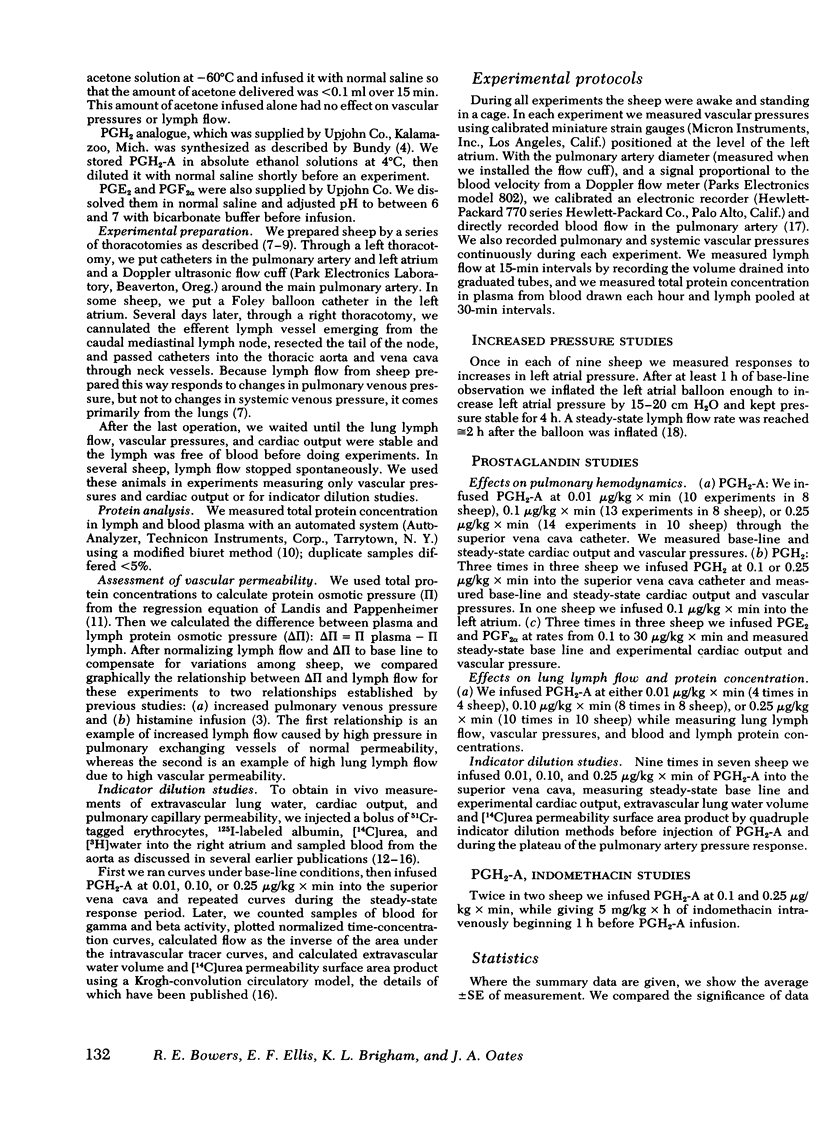

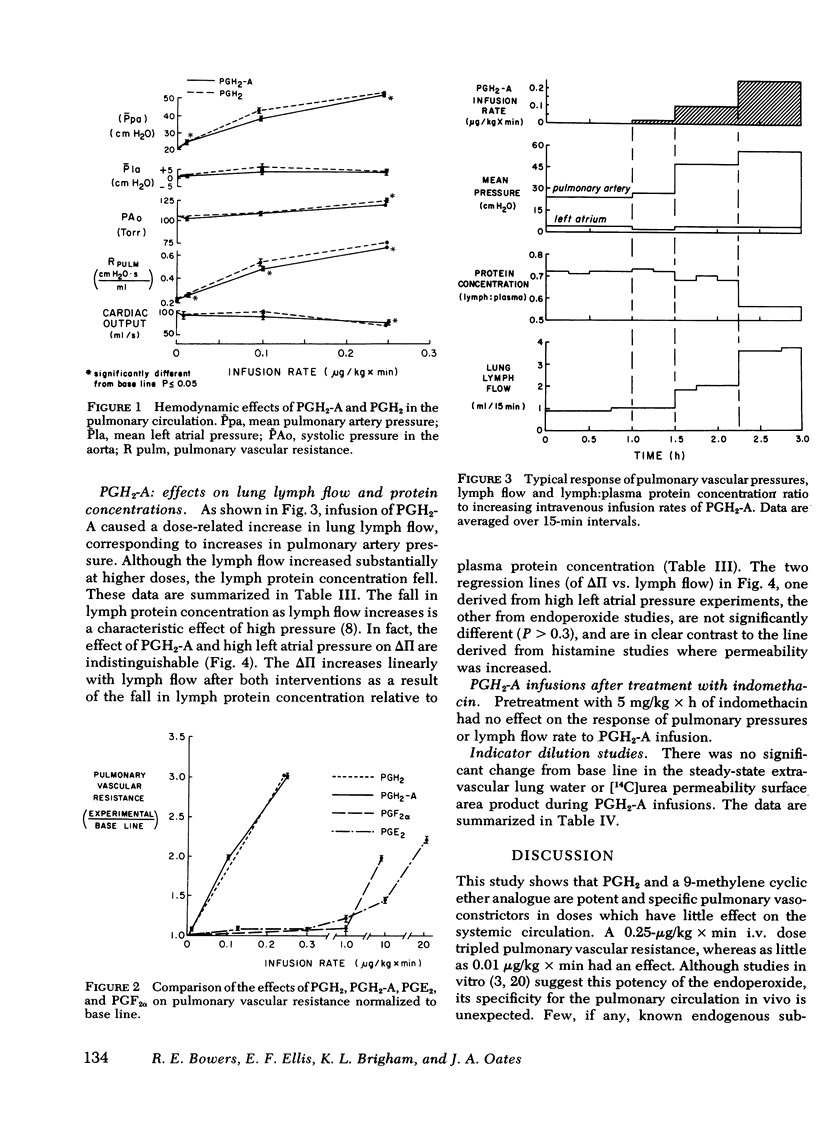
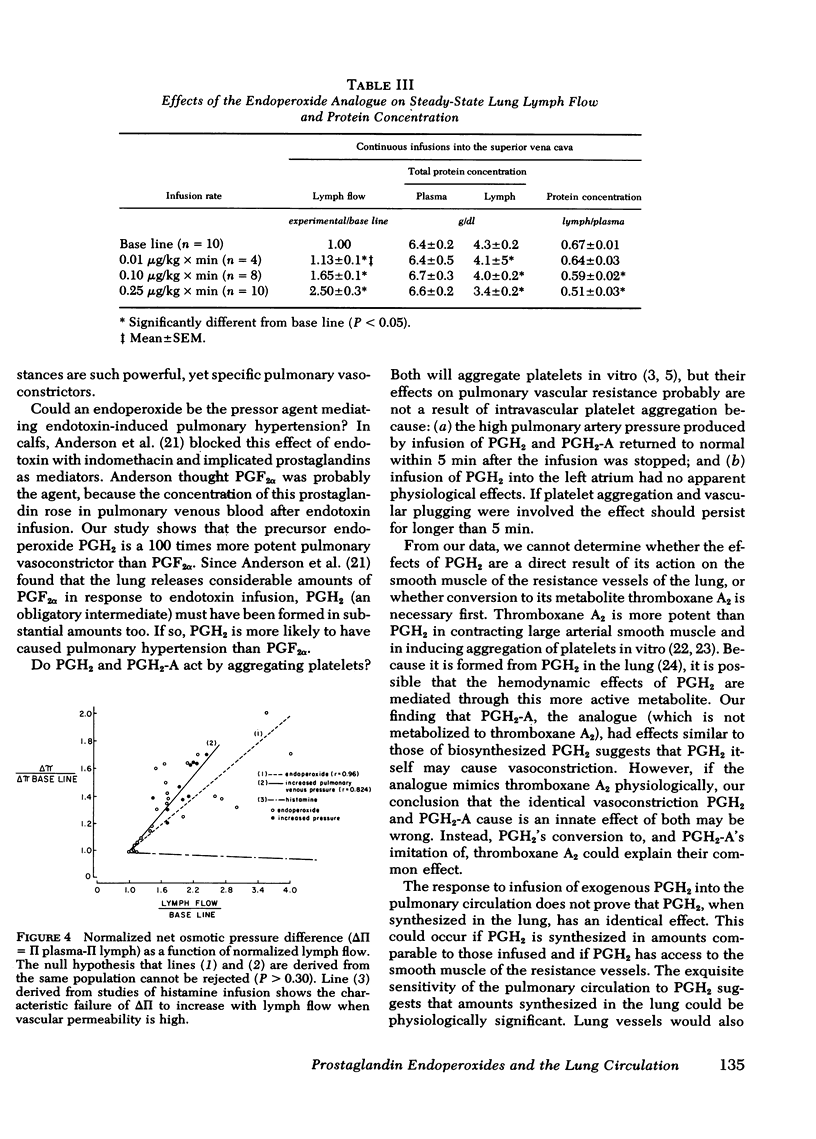
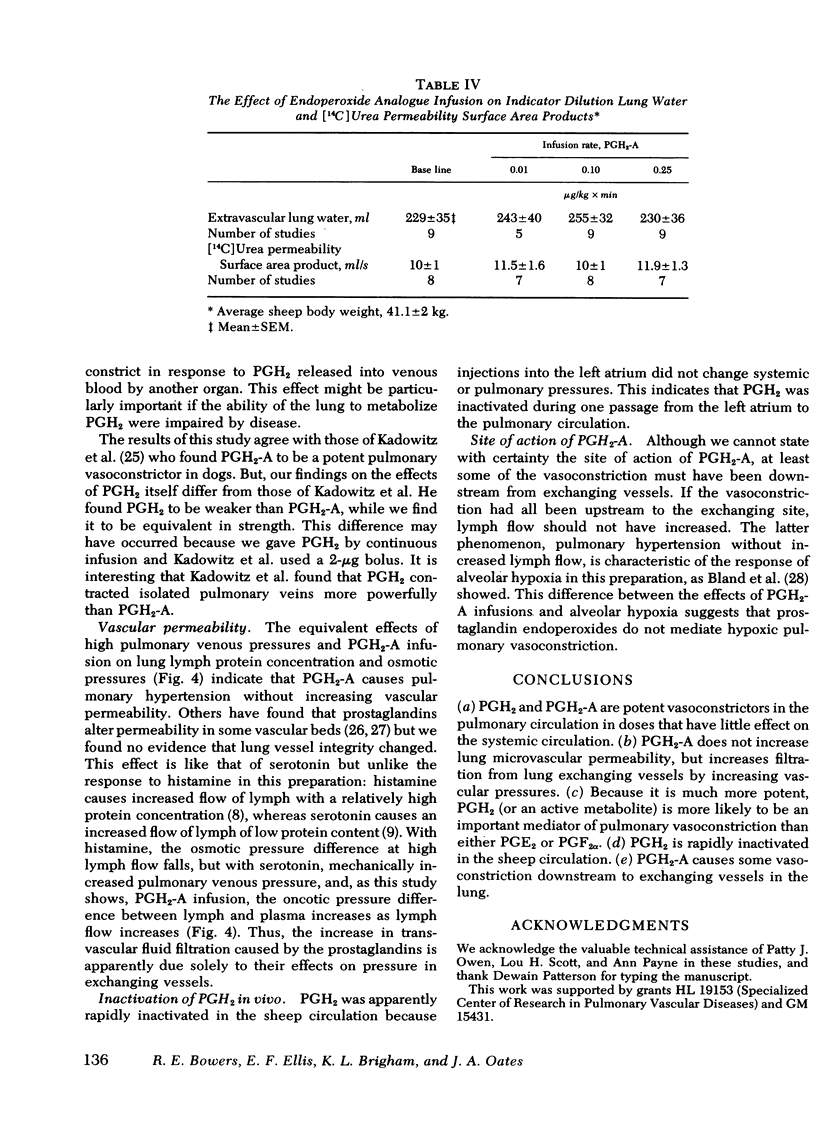
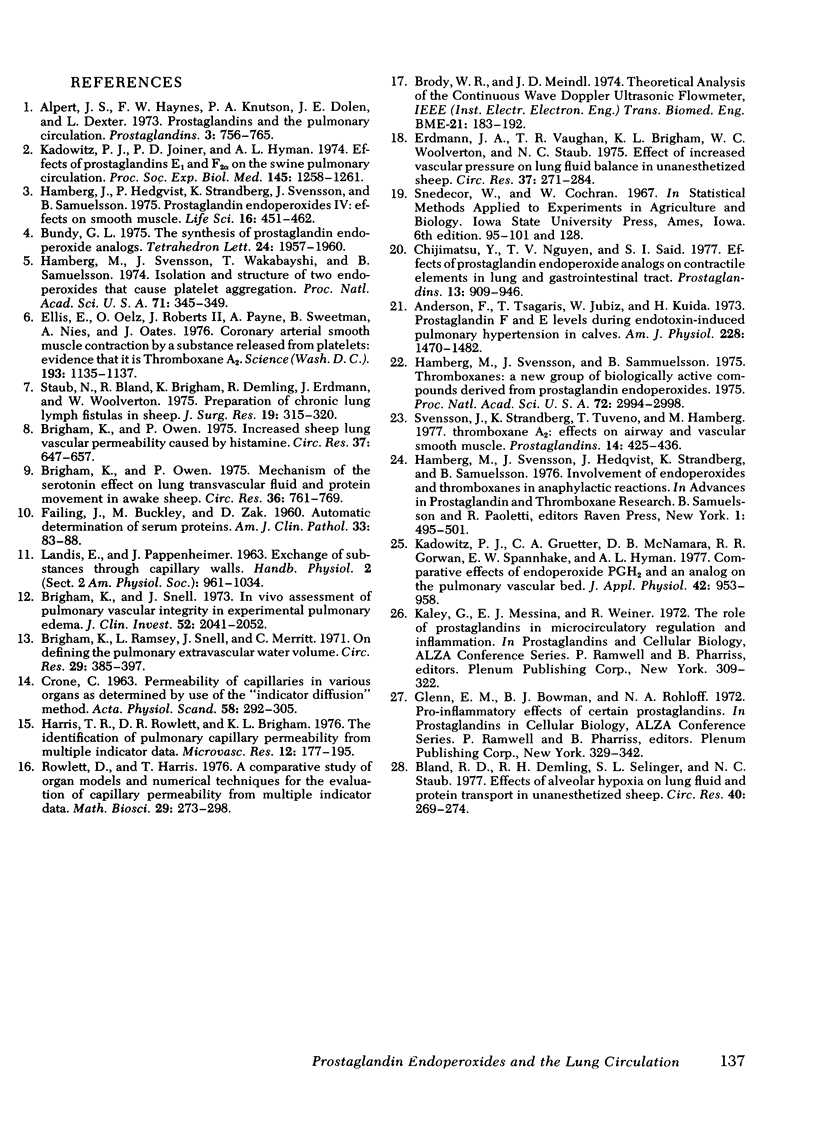
Selected References
These references are in PubMed. This may not be the complete list of references from this article.
- Alpert J. S., Haynes F. W., Knutson P. A., Dalen J. E., Dexter L. Prostaglandins and the pulmonary circulation. Prostaglandins. 1973 Jun;3(6):759–765. doi: 10.1016/0090-6980(73)90002-6. [DOI] [PubMed] [Google Scholar]
- Anderson F. L., Tsagaris T. J., Jubiz W., Kuida H. Prostaglandin F and E levels during endotoxin-induced pulmonary hypertension in calves. Am J Physiol. 1975 May;228(5):1479–1482. doi: 10.1152/ajplegacy.1975.228.5.1479. [DOI] [PubMed] [Google Scholar]
- Bland R. D., Demling R. H., Selinger S. L., Staub N. C. Effects of alveolar hypoxia on lung fluid and protein transport in unanesthetized sheep. Circ Res. 1977 Mar;40(3):269–274. doi: 10.1161/01.res.40.3.269. [DOI] [PubMed] [Google Scholar]
- Brigham K. L., Owen P. J. Increased sheep lung vascular permeability caused by histamine. Circ Res. 1975 Nov;37(5):647–657. doi: 10.1161/01.res.37.5.647. [DOI] [PubMed] [Google Scholar]
- Brigham K. L., Owen P. J. Mechanism of the serotonin effect on lung transvascular fluid and protein movement in awake sheep. Circ Res. 1975 Jun;36(6):761–770. doi: 10.1161/01.res.36.6.761. [DOI] [PubMed] [Google Scholar]
- Brigham K. L., Ramsey L. H., Snell J. D., Merritt C. R., 3rd On defining the pulmonary extravascular water volume. Circ Res. 1971 Oct;29(4):385–397. doi: 10.1161/01.res.29.4.385. [DOI] [PubMed] [Google Scholar]
- Brigham K. L., Snell J. D., Jr In vivo assessment of pulmonary vascular integrity in experimental pulmonary edema. J Clin Invest. 1973 Aug;52(8):2041–2052. doi: 10.1172/JCI107388. [DOI] [PMC free article] [PubMed] [Google Scholar]
- Brody W. R., Meindl J. D. Theoretical analysis of the CW doppler ultrasonic flowmeter. IEEE Trans Biomed Eng. 1974 May;21(3):183–192. doi: 10.1109/TBME.1974.324381. [DOI] [PubMed] [Google Scholar]
- CRONE C. THE PERMEABILITY OF CAPILLARIES IN VARIOUS ORGANS AS DETERMINED BY USE OF THE 'INDICATOR DIFFUSION' METHOD. Acta Physiol Scand. 1963 Aug;58:292–305. doi: 10.1111/j.1748-1716.1963.tb02652.x. [DOI] [PubMed] [Google Scholar]
- Chijimatsu Y., Nguyen T. V., Said S. I. Effects of prostaglandin endoperoxide analogs on contractile elements in lung and gastrointestinal tract. Prostaglandins. 1977 May;13(5):909–916. doi: 10.1016/0090-6980(77)90220-9. [DOI] [PubMed] [Google Scholar]
- Ellis E. F., Oelz O., Roberts L. J., 2nd, Payne N. A., Sweetman B. J., Nies A. S., Oates J. A. Coronary arterial smooth muscle contraction by a substance released from platelets: evidence that it is thromboxane A2. Science. 1976 Sep 17;193(4258):1135–1137. doi: 10.1126/science.959827. [DOI] [PubMed] [Google Scholar]
- Erdmann A. J., 3rd, Vaughan T. R., Jr, Brigham K. L., Woolverton W. C., Staub N. C. Effect of increased vascular pressure on lung fluid balance in unanesthetized sheep. Circ Res. 1975 Sep;37(3):271–284. doi: 10.1161/01.res.37.3.271. [DOI] [PubMed] [Google Scholar]
- Hamberg M., Hedqvist P., Strandberg K., Svensson J., Samuelsson B. Prostaglandin endoperoxides IV. Effects on smooth muscle. Life Sci. 1975 Feb 1;16(3):451–462. doi: 10.1016/0024-3205(75)90266-0. [DOI] [PubMed] [Google Scholar]
- Hamberg M., Svensson J., Hedqvist P., Strandberg K., Samuelsson B. Involvement of endoperoxides and thromboxanes in anaphylactic reactions. Adv Prostaglandin Thromboxane Res. 1976;1:495–501. [PubMed] [Google Scholar]
- Hamberg M., Svensson J., Samuelsson B. Thromboxanes: a new group of biologically active compounds derived from prostaglandin endoperoxides. Proc Natl Acad Sci U S A. 1975 Aug;72(8):2994–2998. doi: 10.1073/pnas.72.8.2994. [DOI] [PMC free article] [PubMed] [Google Scholar]
- Hamberg M., Svensson J., Wakabayashi T., Samuelsson B. Isolation and structure of two prostaglandin endoperoxides that cause platelet aggregation. Proc Natl Acad Sci U S A. 1974 Feb;71(2):345–349. doi: 10.1073/pnas.71.2.345. [DOI] [PMC free article] [PubMed] [Google Scholar]
- Harris T. R., Rowlett R. D., Brigham K. L. The identification of pulmonary capillary permeability from multiple-indicator data. Effects of increased capillary pressure and alloxan treatment in the dog. Microvasc Res. 1976 Sep;12(2):177–196. doi: 10.1016/0026-2862(76)90017-0. [DOI] [PubMed] [Google Scholar]
- Kadowitz P. J., Gruetter C. A., McNamara D. B., Gorman R. R., Spannhake E. W., Hyman A. L. Comparative effects of endoperoxide PGH2 and an analog on the pulmonary vascular bed. J Appl Physiol Respir Environ Exerc Physiol. 1977 Jun;42(6):953–958. doi: 10.1152/jappl.1977.42.6.953. [DOI] [PubMed] [Google Scholar]
- Kadowitz P. J., Joiner P. D., Hyman A. L. Influence of prostaglandins E1 and F2a on pulmonary vascular resistance in the sheep. Proc Soc Exp Biol Med. 1974 Apr;145(4):1258–1261. doi: 10.3181/00379727-145-37992. [DOI] [PubMed] [Google Scholar]
- Staub N. C., Bland R. D., Brigham K. L., Demling R., Erdmann A. J., 3rd, Woolverton W. C. Preparation of chronic lung lymph fistulas in sheep. J Surg Res. 1975 Nov;19(5):315–320. doi: 10.1016/0022-4804(75)90056-6. [DOI] [PubMed] [Google Scholar]
- Svenssen J., Strandberg K., Tuvemo T., Hamberg M. Thromboxane A2: effects on airway and vascular smooth muscle. Prostaglandins. 1977 Sep;14(3):425–436. doi: 10.1016/0090-6980(77)90258-1. [DOI] [PubMed] [Google Scholar]


